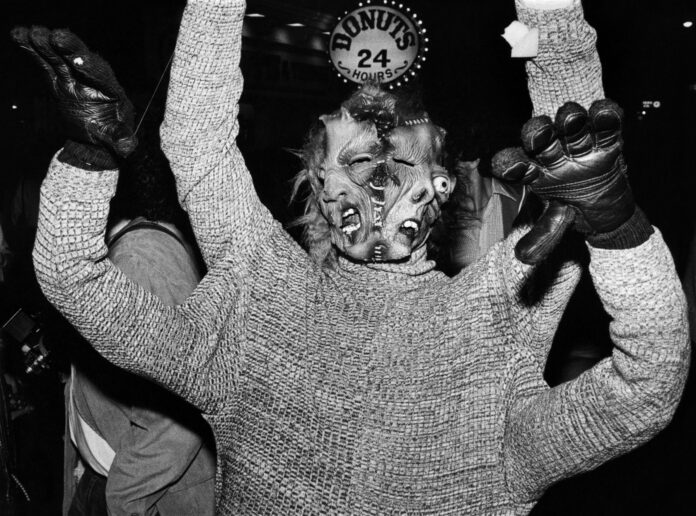In 1981, when photographer Ken Werner wrote the last paragraph of the introduction to his book of photographs of the era’s wild, queer-centric Castro and Polk Street Halloween celebrations, he meant it as a civic warning—and a strident call to action.
Conservative “bluenoses”—originally spearheaded by Harvey Milk’s murderer Dan White, who whipped up anti-festivity sentiments among local merchants—were successfully quashing those debaucherous street parties, at which the local population, including the gay community, expressed its wildly artistic side, outside of recession-era straight-jacket day jobs. Self-appointed monitors (many of them also gay) had begun policing the crowds, wearing t-shirts emblazoned with “There Ain’t NO Street Party.”
There is indeed no party when when thousands of people, many in elaborate costume, are crowded onto a small stretch of sidewalk. So if current policies continue, San Francisco’s maskers face certain disenchantment, and the now-legendary street celebrations will fade away, as they did for two decades [in the conformist era] following World War II. There are, no doubt, many members of the body politic who would welcome exactly that. But maskers have rights too, especially when they claim but one night a year for their revels. Halloween in San Francisco has become a unique cultural event, an occasion for a spectacular outburst of imagination, humor, sensuality, and spirit. Somehow, those of us who love this rich yet fragile tradition must find a way for it to continue—it’s too fine a trip to lose.
Sound familiar? We’ve been fighting these kinds of fights for decades. And it will be interesting, in this rare era of SF government actually promoting huge parties and outdoor gatherings instead of discouraging them, to see what these next few years of Halloweens bring, as the city still struggles to revive itself after COVID.
When Werner wrote those words, of course, he couldn’t see the terrifying shadow bending over his shoulder and slowly spilling over the subjects in his book, eventually obliterating many of them. “The book came out two months before the first cases were diagnosed and we were caught up in a giant wave of fear from the twin plagues: AIDS and Reagan,” Werner told me over the phone from Miami, where he was temporarily lodged, as Hurricane Milton barreled toward Florida. “When it was time to reprint the book, I wanted the highest quality we could get, to honor the subjects, so many of whom did not make it.”
Those souls are now immortalized in an absolutely gorgeous reissue of Halloween by Anthology Editions, which will have you giggling through tears at the brilliant ingenuity and pagan energy of local “maskers” showing off their only-in-SF spirit.
1970s pop culture, sexual liberation, old school humor, political satire, and fabulously artistic costumery are tossed in a blender in its dozens of pages. It was a time when you could either completely disguise yourself as a giant papier-mâché hammer or cardboard package addressed to Loehmann’s in Daly City’s Westlake Shopping Center—or simply pin an ad for porn flick “Dunkin’ Dildos” or a cartoon of Donald Duck reading Mein Kampf to your punk rock jacket and call it a night. Richard Nixon with huge hard-on? A ‘Puke on Pumpkins!” protest sign? Why the hell not. And one of the book’s distinct joys is recognizing traces of long-vanished San Francisco in the background, from donut shop signs to cinema marquees.
“I had just moved from New York to San Francisco in 1976, and a friend of mine said, There’s something on Polk Street you need to see, bring your camera and film and flash,” Werner, who endearingly oscillates between dry humor and buoyant enthusiasm, said. “I was immediately blown away by the outpouring of energy and public expression. It was gay people, straight people, all kinds. There was a saying back in those days that the North American continent was tilted, and the loose marbles all rolled to San Francisco. There was so much wild creativity and eccentricity in the city, but it was nearly impossible to find a day job where you could express yourself and also support yourself.”
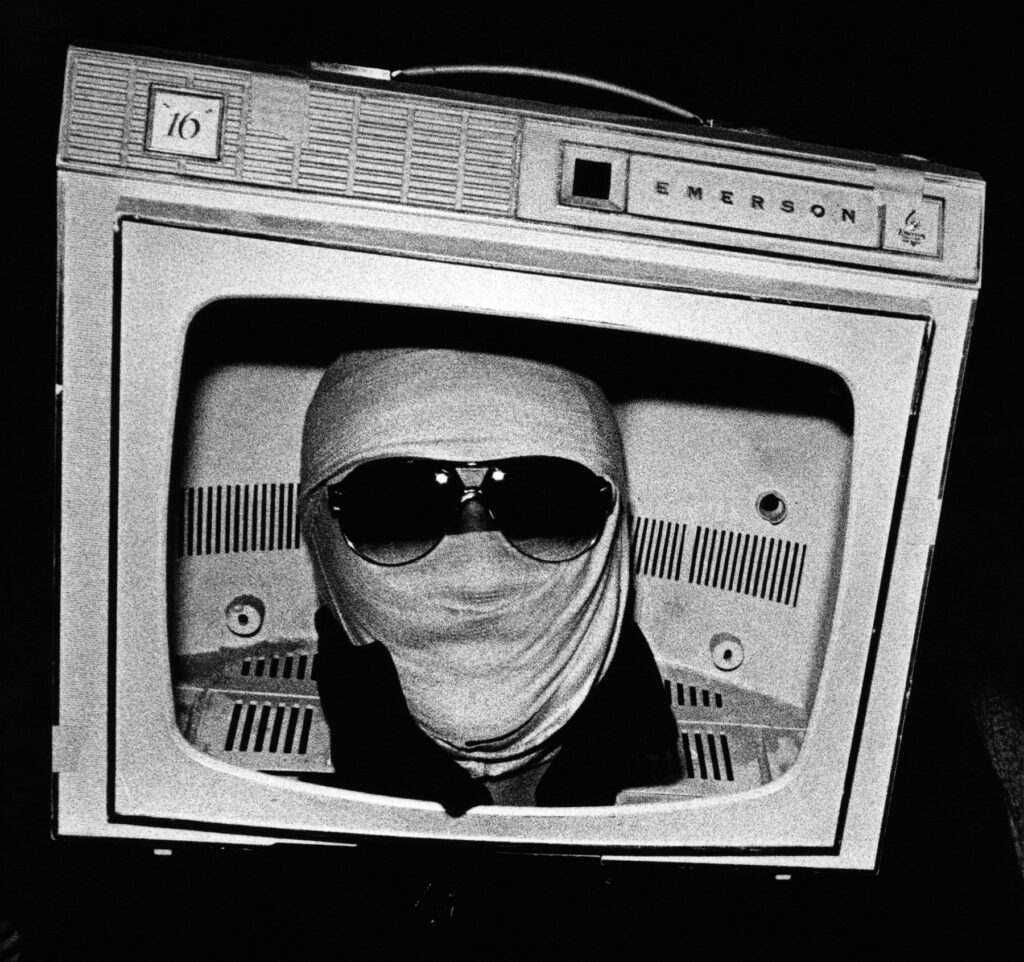
With his prosumer, off-the-shelf Nikon 35-millimeter camera and flash, Werner threw himself into documenting the yearly scenes for half a decade, including Halloween on Polk Street (1976, 1977, 1978) and on Castro (1979 and 1980), two of sex activist Margo St. James‘ Hookers’ Balls (1978 and 1979), and a Beaux Arts Ball put on by the Tavern Guild (1980).
“It was very kinetic, in-the-moment work. I didn’t want people to pose, I wanted to catch them as they inhabited their Halloween selves. As I looked back when I was putting together the book, I thought, Holy shit, all these photos were the result of just eight days of shooting, spread out over five years. Yet there were so many great photos. These weren’t just people making art, they were art, they were making street theater. When I eventually made the book, I considered it an art object, and the subjects themselves inside it were the art itself.
“I saw making the book as an attempt to reach out. I wanted people who didn’t have access to these amazing events to know that there were people out there like them, and I wanted the community here to know that we were in danger of losing these things,” he said.
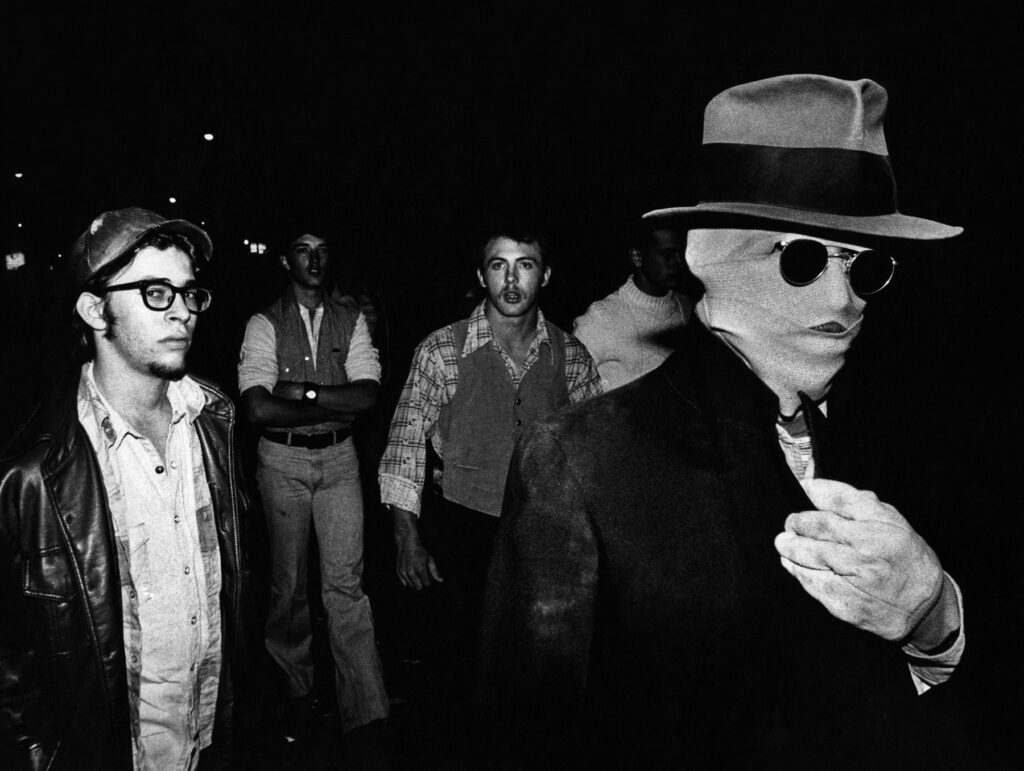
Werner has been a commercial photographer and launched successful specialty magazine Darkroom Photography, which at its height claimed 100,000 subscribers. “I definitely knew how to print photos. This was before Photoshop, of course, but I was very proficient in dodge and burn darkroom techniques and knew how to get the effects I wanted. I also paired the photos across from each other, so that they commented on each other, or gave some narrative contrast. The whole book tells a story.”
A major snag, however, was in the original printing of Halloween—half of the run had to be scrapped when the binding was botched by a service in San Diego. Werner distributed the rest to bookstores and other buyers in person, storing them in the hallway of his small apartment on Octavia, which was also the name of the publishing company he set up (“appropriately the street and the company both named after a mad queen”). In a unique gesture, before the Internet made authors more accessible, he put his own address on the end page, with the message “Comments and correspondence invited.”
“I thought I would just sit back and let the groupies roll in,” he said with a wry laugh. “Unfortunately, that didn’t happen. My conclusion was that this book, with its political message and focus on a certain community, was just too out there for people.”
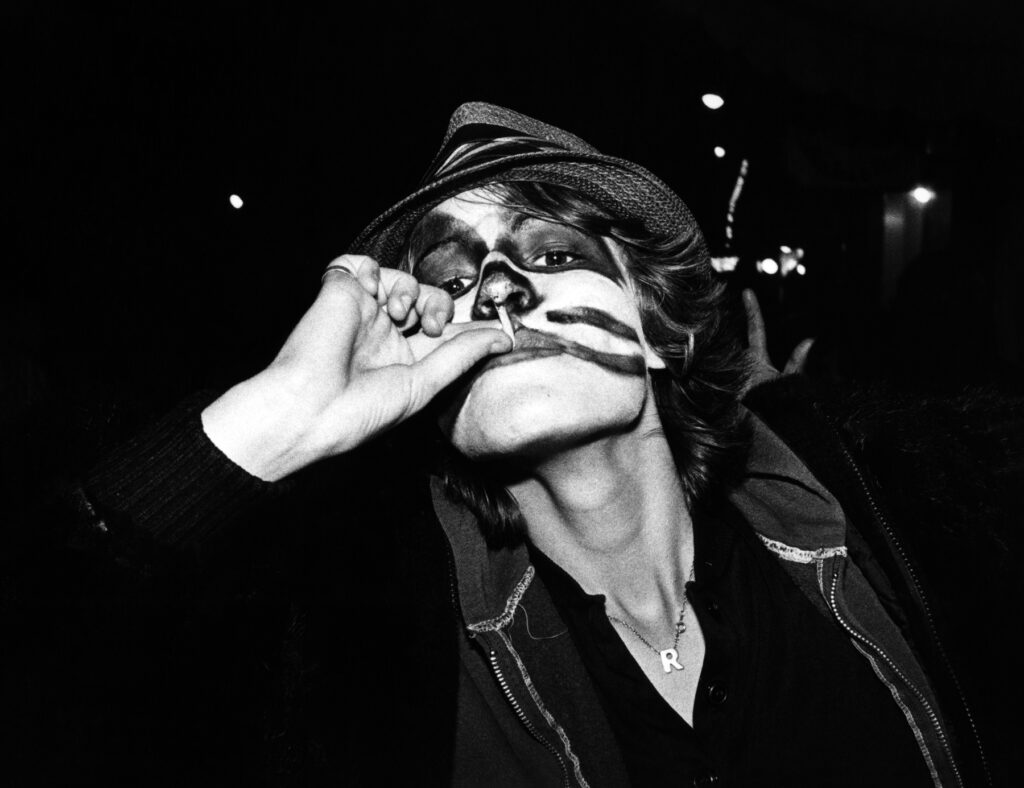
Strangely—perhaps spookily—however, a set of coincidences led the book to have an eerie afterlife. Sometime after the book was published, Werner was at a Haight Street party and met V. Vale, publisher of punk rock fanzine Search & Destroy and the RE/Search books that would define alternative culture in the ’80s and ’90s. “I happened to mention that I had put out Halloween some time earlier, and he lit up. ‘I love that book!’ he said. ‘That’s a famous book among my friends.’ We kept a conversation going and I eventually became a consultant for RE/Search—one of my Halloween photos, in color, is the back cover of the book Modern Primitives.”
Werner also discovered that copies of Halloween, which was becoming known as an anthropological record of the time it documented, had made its way into big time libraries, like the Bodleian at Oxford. “It was very gratifying to know that even if the book was hardly the bestseller I intended, it was appreciated on these levels I never thought possible.”
Then, decades later, came a call from Anthology Editions, an art book publisher in New York. “Someone had shown them the book and they loved it,” Werner said. “They went through a lot of trouble to find me to republish it, because I don’t maintain any kind of web presence—I’d much rather take a long walk or dance around wildly. It was perfect timing, though. In 2022 I was depressed due to lots of personal factors, and this project saved me. It was such an acknowledgment by the younger generation that I had done something worthwhile.
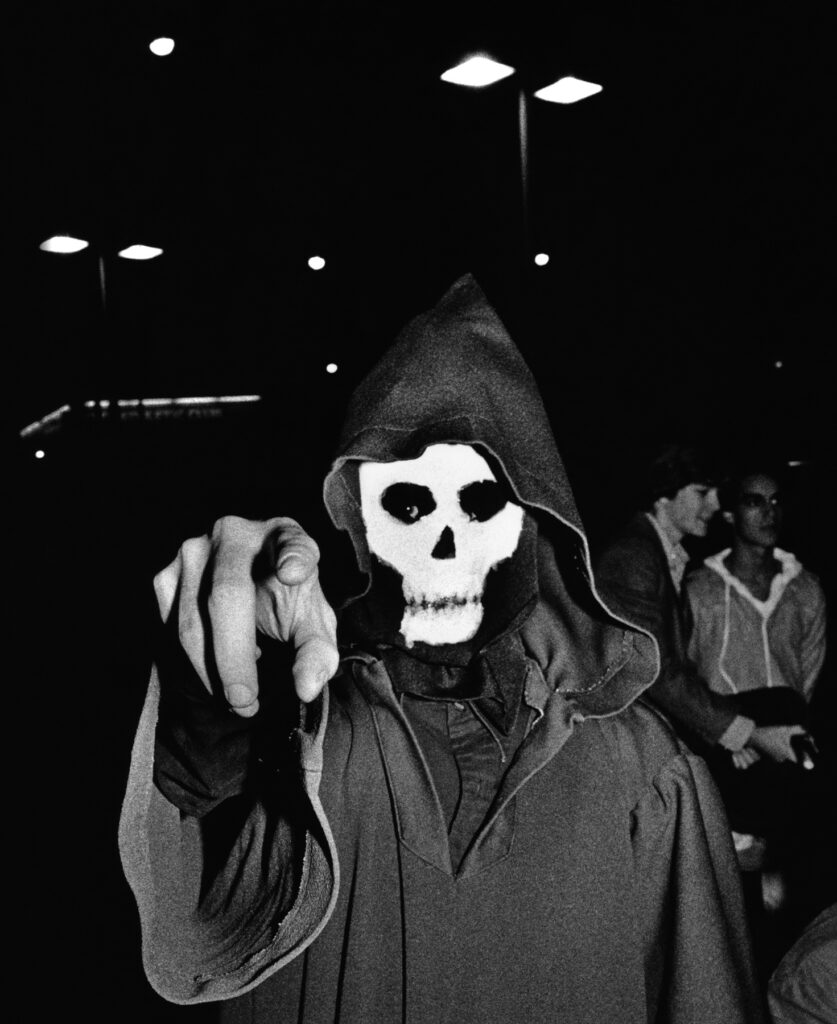
“I was lucky, too, in that they are very serious when it comes to quality. I told them we could only go forward if we were meticulous. This time there was some computer technology involved—Photoshop is such a powerful tool, and I familiarized myself with it—but I also insisted that they drum scan the original black and white prints. I want these prints to eventually be displayed. And they totally agreed. I finally got to make the book I wanted to make.”
So how does it feel to have the book out in the world again, properly? “It’s incredibly gratifying and of course a kind of closure. But, unfortunately, the book is still so relevant. On the one hand, I wanted to show what one person with a little Nikon camera could capture if they look at what’s around them. On the other, I wanted to preserve this spirit to inspire future generations to fight to save their freedom of expression and community culture. I really hope I am accomplishing both.”
HALLOWEEN by Ken Werner is available though Anthology Editions. More info here.

